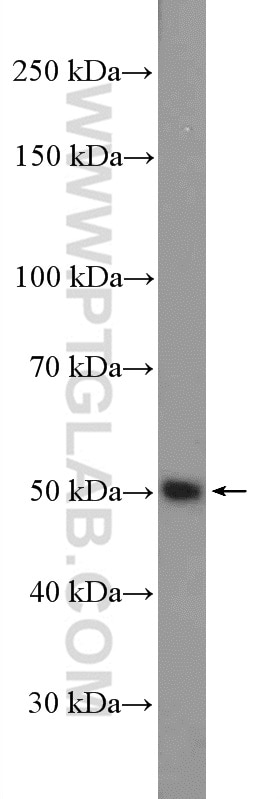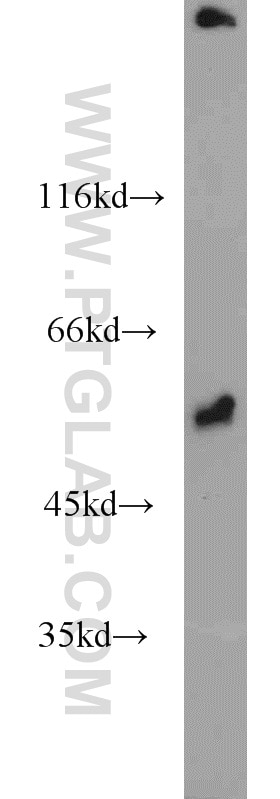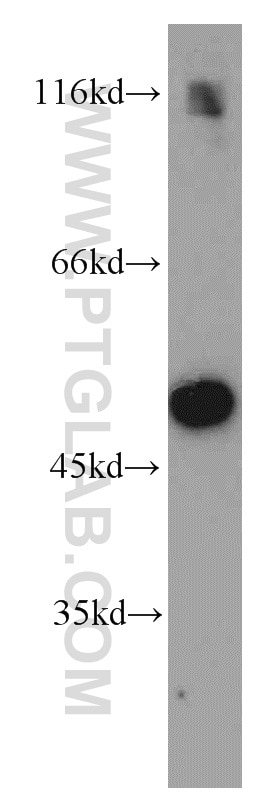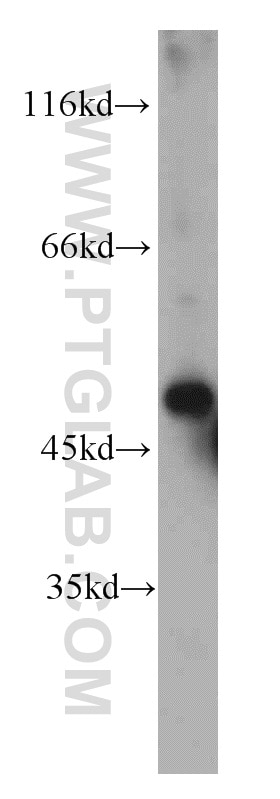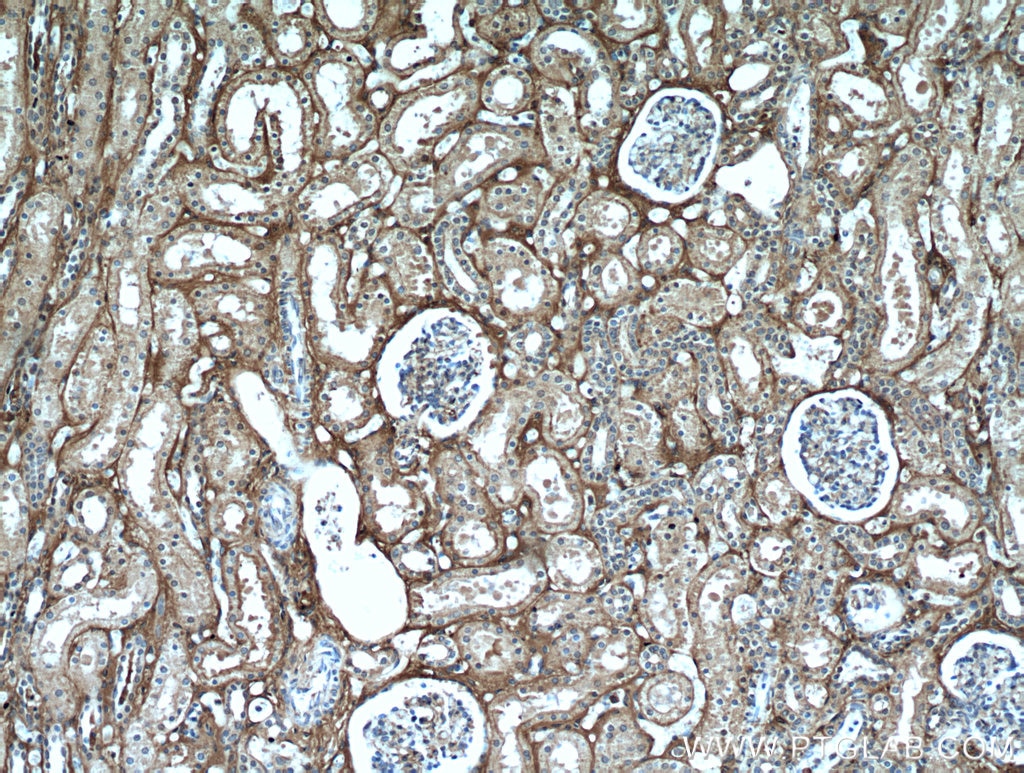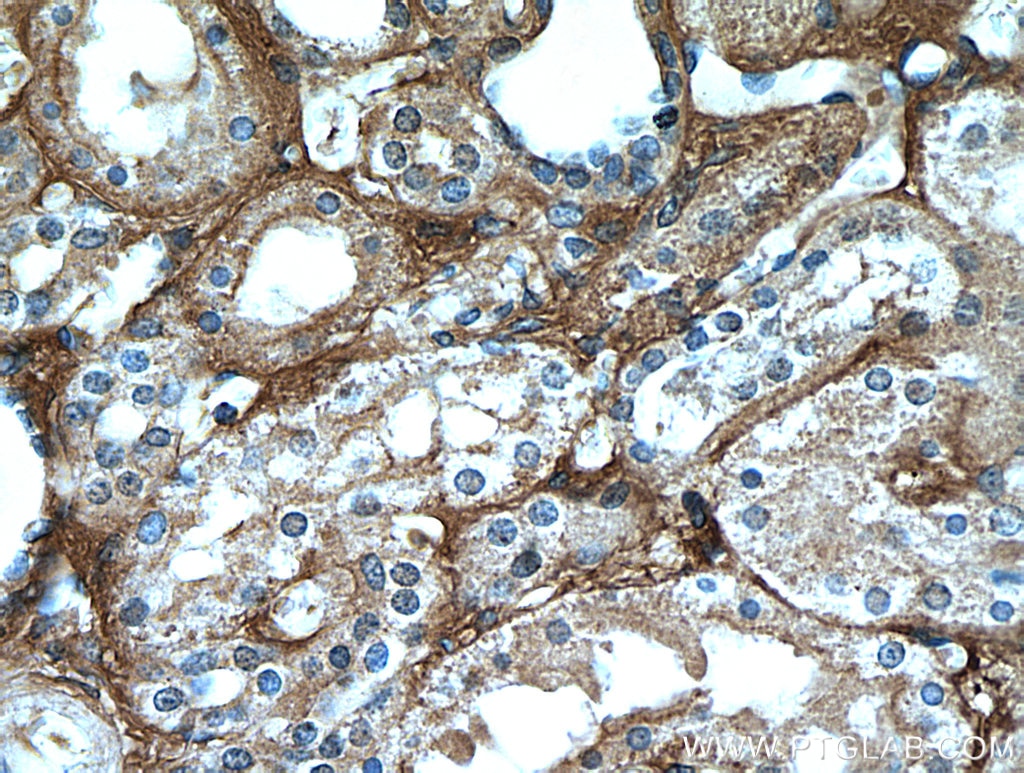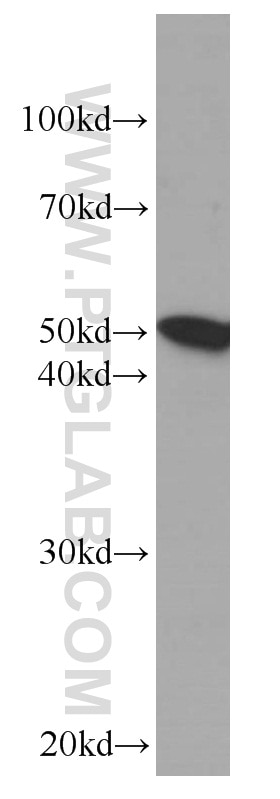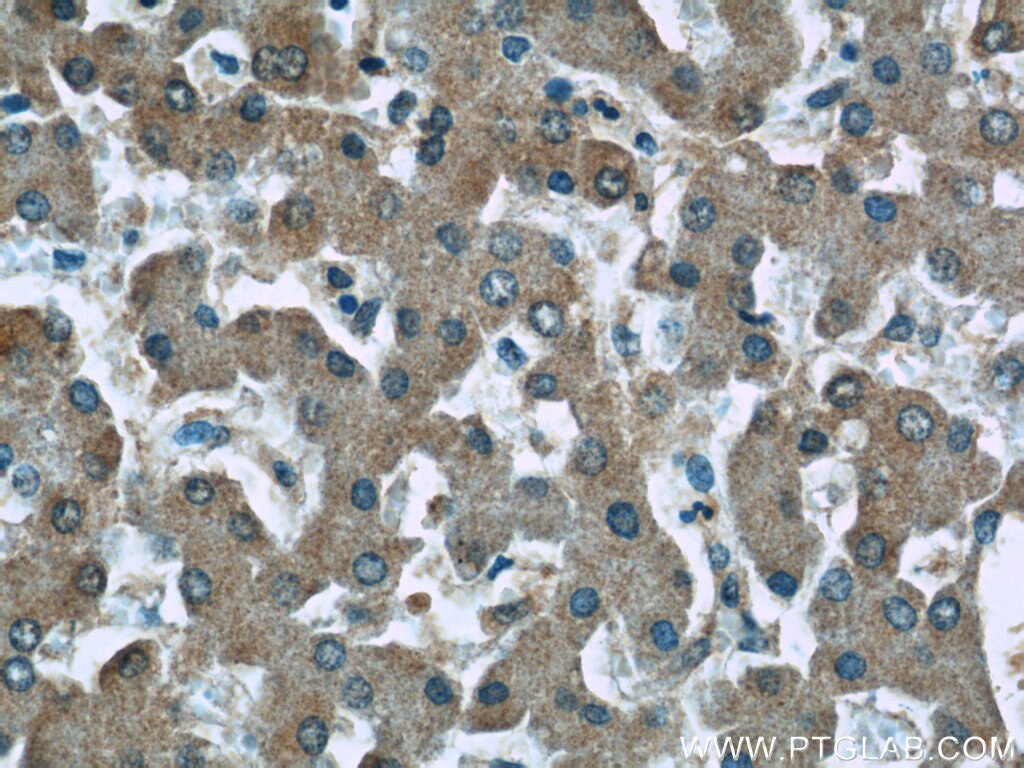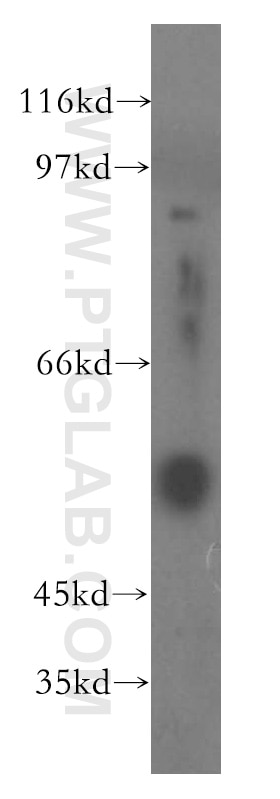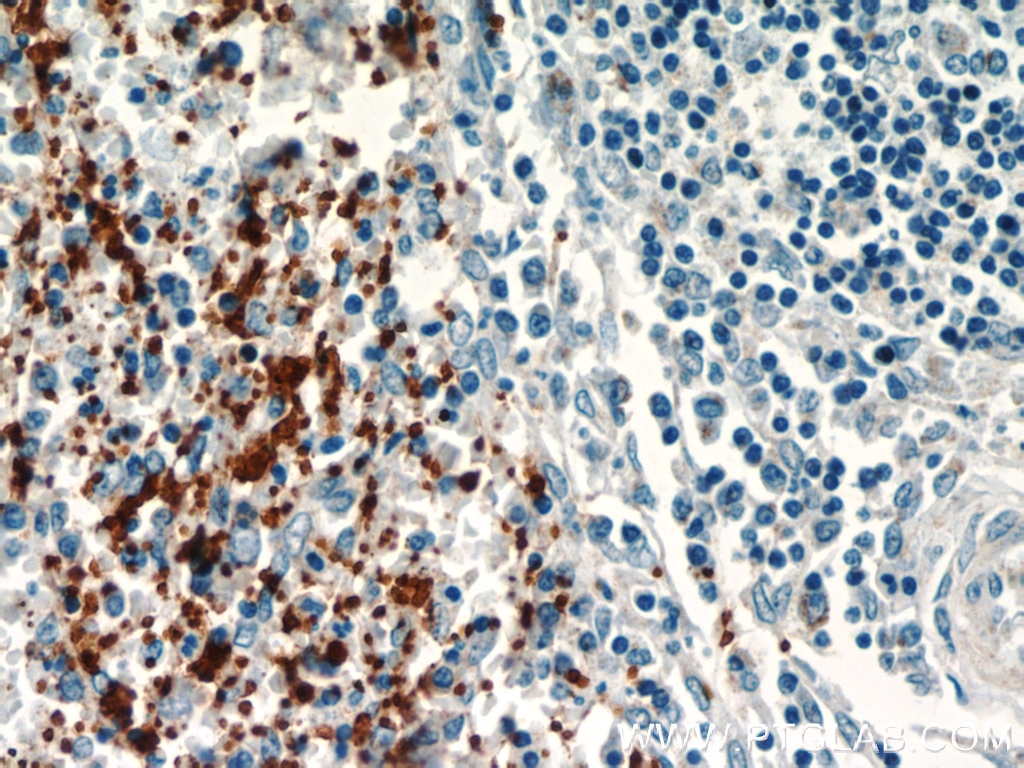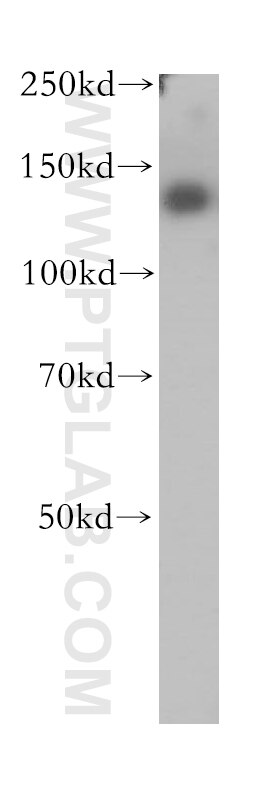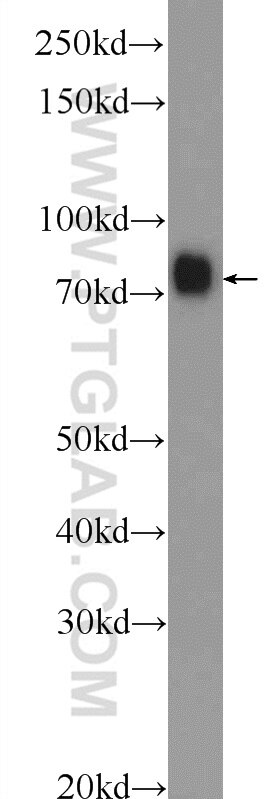- Phare
- Validé par KD/KO
Anticorps Polyclonal de lapin anti-Fibrinogen Beta Chain
Fibrinogen Beta Chain Polyclonal Antibody for WB, IHC, ELISA
Hôte / Isotype
Lapin / IgG
Réactivité testée
Humain, rat, souris et plus (1)
Applications
WB, IF, IHC, ELISA
Conjugaison
Non conjugué
N° de cat : 16747-1-AP
Synonymes
Galerie de données de validation
Applications testées
| Résultats positifs en WB | tissu cardiaque de souris, tissu cérébral de souris, tissu hépatique de souris, tissu rénal de souris |
| Résultats positifs en IHC | tissu rénal humain il est suggéré de démasquer l'antigène avec un tampon de TE buffer pH 9.0; (*) À défaut, 'le démasquage de l'antigène peut être 'effectué avec un tampon citrate pH 6,0. |
Dilution recommandée
| Application | Dilution |
|---|---|
| Western Blot (WB) | WB : 1:1000-1:8000 |
| Immunohistochimie (IHC) | IHC : 1:20-1:200 |
| It is recommended that this reagent should be titrated in each testing system to obtain optimal results. | |
| Sample-dependent, check data in validation data gallery | |
Applications publiées
| KD/KO | See 2 publications below |
| WB | See 9 publications below |
| IHC | See 3 publications below |
| IF | See 4 publications below |
Informations sur le produit
16747-1-AP cible Fibrinogen Beta Chain dans les applications de WB, IF, IHC, ELISA et montre une réactivité avec des échantillons Humain, rat, souris
| Réactivité | Humain, rat, souris |
| Réactivité citée | rat, Humain, souris, Plasmodium falciparum |
| Hôte / Isotype | Lapin / IgG |
| Clonalité | Polyclonal |
| Type | Anticorps |
| Immunogène | Fibrinogen Beta Chain Protéine recombinante Ag10169 |
| Nom complet | fibrinogen beta chain |
| Masse moléculaire calculée | 491 aa, 56 kDa |
| Poids moléculaire observé | 50 kDa |
| Numéro d’acquisition GenBank | BC107766 |
| Symbole du gène | Fibrinogen Beta Chain |
| Identification du gène (NCBI) | 2244 |
| Conjugaison | Non conjugué |
| Forme | Liquide |
| Méthode de purification | Purification par affinité contre l'antigène |
| Tampon de stockage | PBS avec azoture de sodium à 0,02 % et glycérol à 50 % pH 7,3 |
| Conditions de stockage | Stocker à -20°C. Stable pendant un an après l'expédition. L'aliquotage n'est pas nécessaire pour le stockage à -20oC Les 20ul contiennent 0,1% de BSA. |
Informations générales
Fibrinogen is a soluble plasma glycoprotein synthesized in the liver. It is composed of two sets of three structurally different subunits: alpha (FGA), beta (FGB), gamma (FGG). Fibrinogen is converted by thrombin into fibrin during blood coagulation. Fibrinogen and fibrin play overlapping roles in blood clotting, fibrinolysis, cellular and matrix interactions, the inflammatory response, wound healing, and neoplasia (PMID: 16102057). FGB is the beta chain of fibrinogen. During conversion of fibrinogen to fibrin, fibrinopeptide B is cleaved from FGB by thrombin. Mutations in the gene of FGB lead to several disorders, including afibrinogenemia, dysfibrinogenemia, hypodysfibrinogenemia and thrombotic tendency.
Protocole
| Product Specific Protocols | |
|---|---|
| WB protocol for Fibrinogen Beta Chain antibody 16747-1-AP | Download protocol |
| IHC protocol for Fibrinogen Beta Chain antibody 16747-1-AP | Download protocol |
| Standard Protocols | |
|---|---|
| Click here to view our Standard Protocols |
Publications
| Species | Application | Title |
|---|---|---|
Blood Fibrinogen β-derived Bβ(15-42) peptide protects against kidney ischemia/reperfusion injury. | ||
Biochem Biophys Res Commun Characterization of lncRNA functioning in ovine conceptuses and endometria during the peri-implantation period. | ||
Malar J The malaria parasite Plasmodium falciparum in red blood cells selectively takes up serum proteins that affect host pathogenicity. | ||
Brain Res Accelerated accumulation of fibrinogen peptide chains with Aβ deposition in Alzheimer's disease (AD) mice and human AD brains. |
